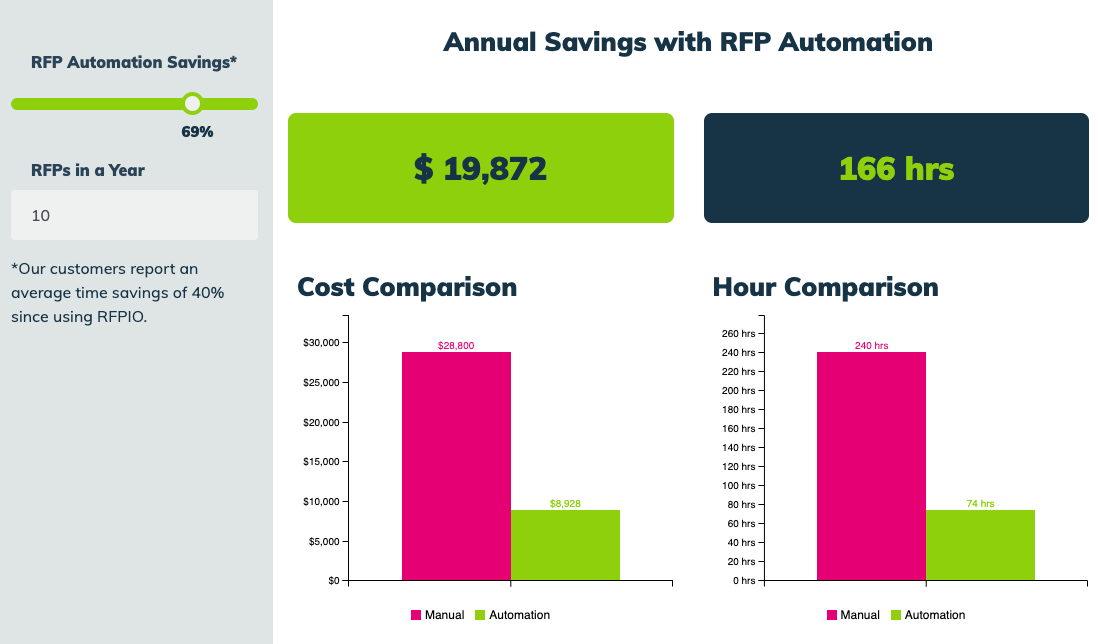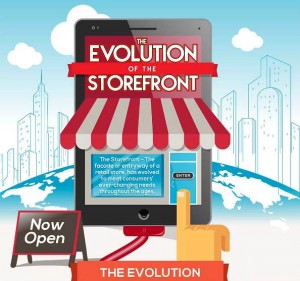Let’s not sugarcoat it: responding to requests for proposals (RFPs) prior to automation was brutal. Like doing your taxes, you knew there was likely a payoff, but you procrastinated going through the rigamarole for as long as possible.
Proposal management teams of yesteryear relied on antiquated processes, redundancy, and inefficiency, which forced subject matter experts (SMEs) to spend up to 30% of time they didn’t have to spare responding to RFPs. Valuable time was spent on repetitive tasks. Information and departmental silos kept teams from reaching their fullest revenue-generating potential as a collaborative unit.
Automated technologies have cropped up across every vertical, including proposal management. With RFP automation, there are options and opportunities to advance the RFP response process.
What is RFP automation?
RFP automation is a cloud-based B2B sales technology that helps teams maximize resources and time being spent on RFPs. As a result of these time savings, team members are able to return to other high-priority tasks.
But let’s take a step back.
Billions of years ago (in the late 2000s), marketing automation caused an important shift in email marketing. Automation allowed marketers to achieve more as a team and make a bigger impact on revenue.
Over the past few years, the proposal management industry experienced the same transformative effect with RFP automation.
It’s a collective effort to respond to an RFP, with involvement from multiple departments—sales, marketing, legal, finance, product, compliance, IT—and the list goes on. Often (but not always) there is a dedicated proposal manager directing these projects to keep everyone moving toward the same target…a timely, quality RFP response.
In the olden days, an RFP would come in. The proposal manager would “shred” it and assign questions to an SME—the all too familiar questions the SME had answered many times before on other proposals.
The SME then would spend too much time looking through folders and documents to copy and paste previous responses. There would be little time to ensure quality control.
With RFP automation, an SME only has to answer a question once, and then it’s captured in an Answer Library. The proposal manager can then reference the Answer Library to populate the responses with relevant content. SME involvement consists only of oversight, making sure the content is accurate and optimized.
Automation helps teams maximize resources and time being spent on RFPs. Time savings allow team members to return to other high-priority tasks. Some of your most valuable and costly resources are involved in RFP responses. If you respond to 100 RFPs in a year, this really adds up. To calculate your RFP automation cost savings, check out our ROI calculator.

How do you automate an RFP response?
Automating an RFP response comes down to two main things: Artificial intelligence and content. AI-enabled RFP automation technology uses AI to match existing content with new incoming RFP questions. The more content you have, the more accurate the result.
When we set out to build a consolidated (and better) solution for RFP response management back in 2015, over and over we heard that responders wanted a platform that would help them improve collaboration and automate workflows.
A few RFP automation solutions existed, but they weren’t easy to use. And these solutions didn’t integrate with systems that teams were already using across an organization, including CRMs like Salesforce, communication tools like Slack, or cloud storage like Google Drive. With more than 8,000 solutions in the marketing technology landscape, the last thing an organization needs is a solution that doesn’t play nice with other technology its stack.
To make sure we built a solution for proper RFP automation, we focused on three aspects:
- Artificial intelligence: (AI) is changing the way we all work, including how proposal management teams “shred” their RFPs. It’s easier to break up relevant sections, auto-identify response content, and assign questions to subject matter experts.
- Integrations: Our integrations keep all team members working in their preferred tools. Salespeople don’t want to leave their CRM to respond to RFPs and they no longer have to. SMEs are unreachable by email, but they’ll engage through Slack.
- Content management: The Answer Library is the content management hub—not only for RFPs, but for all company information. Anyone has access to the latest and greatest content, which can be easily searched, selected, and inserted into a variety of business documents…even emails.
Benefits of RFP automation
Achieving more with RFP automation also means responding to more RFPs. Organizations that use RFP software respond to 43% more RFPs per year, on average. Because the time-savings realized from automation can be re-invested to maintain or improve response quality, imagine what this scenario, based on data from our research, would do to your revenue forecast:
- Prior to RFP automation, let’s say you responded to an average of about 50 RFPs every year.
- Each RFP win equals, on average, $ 1-3 million.
- Add 43% more responses per year with RFP software.
- At an industry average of 45% win rate, that equates to 22.5 more wins per year.
In this scenario, your revenue forecast from RFPs could increase upwards of $ 22.5 million to $ 67.5 million in a year!
Without automation, response management teams can only dream of increasing RFP responses, let alone revenue forecasts. They respond to RFPs in a reactive state, which, of course, is not the way to produce a quality deliverable for the prospect.
Saving time through efficient processes turns into extra hours to consider viable business opportunities—perhaps even breaking into new markets. RFP automation gives your team the space to establish a proactive process, where technology handles much of the heavy lifting. Team members are brought in to use their strengths to strengthen the content—and the chances of winning the deal.
RFP automation: Is it a good AI use case?
Someone has to say it. Doc Brown of Back to the Future fame wasn’t a scientist. He was a tinkerer who built Rube Goldberg machines. Everything from his dog Einstein’s automatic feeder to the Delorean’s lightning rod was an overly complex chain-reaction contraption. Until he invented the Flux Capacitor. That was the real science that made time travel possible.
How is Doc Brown’s evolution from tinkerer to scientist relevant to automation? In the case of responding to RFPs, you cannot simply automate all of the manual tasks that go into a response. If you do that, then you’ll end up with an RFP Rube Goldberg machine that may not be as reliable as the manual processes you’re trying to eliminate. But in situations where AI is appropriate? That’s the real science that makes automation possible.
As promising as AI is, it’s still just plain hard. Projects are costly, unwieldy, and difficult to complete. Only 53% of AI projects make it into production, and those that do are only profitable about 60% of the time.
RFP automation best practices
In the case of RFPIO’s Auto Respond functionality, AI-enabled automation:
Populates the “first pass” of responses of an entire project or section of a project References Answer Library records in conjunction with a series of filters and the ranking of metadata Uses a recommendation algorithm to prioritize and rank the results Allows results previews so users can decide whether or not to use the answers
To do this, AI operations factor in, among other things:
- Access to the Answer Library content by user
- Similar questions or alternate questions in the Answer Library
- Answer Type/Compatibility
- Content-to-search match percentage
- Star rating (content quality)
- Used count (how often the content is used)
- Last used date
- Last updated date
- Exact word/phrase match
When effectively executed, AI enables RFP automation because the solution has been built by qualified data scientists, extensively tested, based on accurate data models, and designed to scale. It’s also important to note that AI isn’t meant to be used to replace humans; it’s intended to enhance us.
The secret to RFP automation success: Organized content
Even artificial intelligence needs a brain. Don’t worry. This isn’t a Skynet scenario. For RFP automation, the brain is your content library. More specifically, in RFPIO this is known as the Answer Library.
With a robust, well-maintained Answer Library as a resource, your AI can grow in sophistication from machine learning. Users will be able to filter at higher levels, access the cleanest Q&A pairs, and move faster through the response process. Additionally, time saved from RFP automation can be re-invested into developing better content and curating existing content to improve its quality.
A long-term benefit of RFP automation is increased visibility into which content is most popular and where you have gaps. Data from these insights will be valuable in your content strategy moving forward.
So through RFP automation using a reliable Answer Library you get to create better content and find time to continuously organize content, all while responding to more RFPs. That sounds like a profitable use case for AI.
Are you ready to see if RFP automation is right for you? Schedule a demo to find out.
Business & Finance Articles on Business 2 Community
(36)
Report Post




